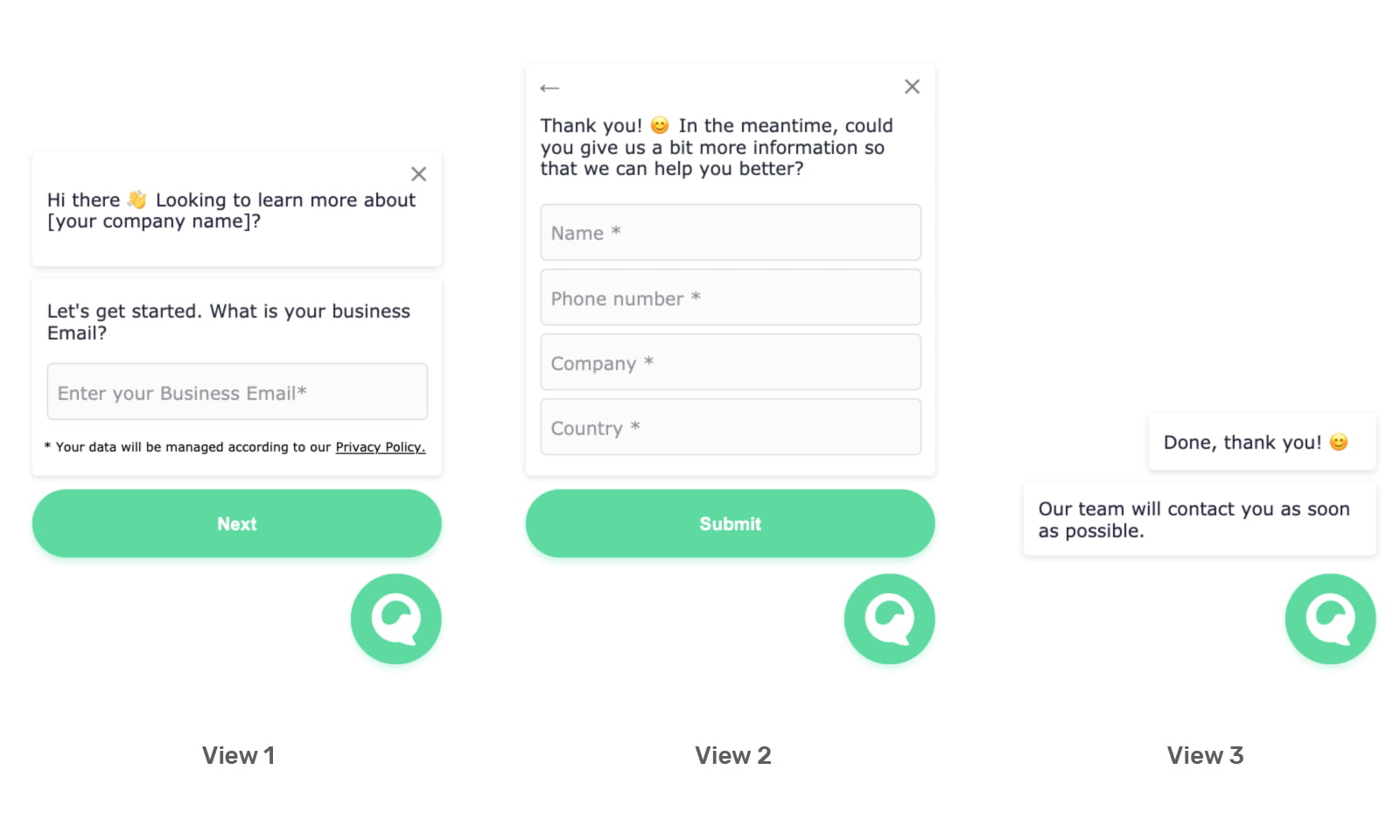



Navigating the digital marketing landscape requires precision and understanding, especially when creating the first point of contact between your company and potential customers: the lead generation form.
This tool, which is crucial but often overlooked, serves as a critical point in transforming interested spectators into engaged prospects. Its design and the data it collects can considerably impact the efficacy of your marketing campaigns.
Let’s look at the art and science of creating lead generation forms that attract attention and develop customer interactions.
Understanding Lead Generation Forms
A lead generation form serves as a conversation starter. It’s the digital equivalent of a handshake, and first impressions are crucial. The primary goal of these forms is to collect information that can convert interest into engagement and engagement into action. Businesses that collect data wisely can adjust their messaging, products, and services to fit their potential customers’ individual needs and preferences.
The components of an efficient lead generation form combine functionality and user experience, ensuring that relevant data and a favorable interaction with your company are collected.
The following aspects contribute to an effective lead generation form:
- Simplicity and Clarity: To avoid overwhelming the user, keep the form concise and straightforward, just asking for essential information.
- Personalization Options: Include fields that collect helpful information for tailoring future communications since this can dramatically increase engagement and conversion rates.
- Intuitive Design: The form should be simple and logical, from one question to the next, with apparent indications of required fields.
- Strong call to action (CTA): Use engaging CTAs to encourage users to complete the form, ensuring they are visible and conveying the value of submitting the form.
- Privacy Assurance: To develop trust, clearly indicate how the information will be used and ensure consumers’ privacy while adhering to GDPR and other data protection regulations.
- Mobile-Friendly: Make sure the form is responsive and easy to fill out on mobile devices, as smartphones and tablets account for a substantial share of online interactions.
- Feedback on Completion: Once the form is submitted, provide prompt feedback or confirmation acknowledging the user’s action and indicating the next steps.

Around 74% of companies say they use online forms for generating leads. Of those, 49.7% say the forms bring the highest conversion of any lead generation strategy.
By sticking to these principles, organizations can design lead generation forms that encourage initial engagement and establish the framework for meaningful, ongoing relationships with prospects.
Essential Information to Capture
Once you have optimally created a lead generation form, you can focus on the primary data you want to capture. Businesses that understand the importance of each type of information are better positioned to initiate meaningful discussions, adapt their interactions, and ultimately increase conversions through a closer connection with their audience.
Contact Details
The cornerstone of any successful follow-up plan is the collection of basic contact information. Gathering information such as an individual’s name, email address, and phone number is critical for opening a line of communication.
For example, Salesforce demonstrates this technique’s effectiveness by initiating personalized outreach across these touch points. This methodology enables a personalized communication plan, guiding leads through the sales funnel with a precision that broad-stroke methods cannot match.

Business Information
In the B2B sector, information about a company’s size, industry, and revenue can provide significant insights. This information not only influences sales strategies, but also drives product development and marketing strategies.
Examples of valuable business data include:
- Company Name: Enables personalization of communications.
- Industry Type: Allows for tailored marketing messages and product recommendations.
- Company Size: Helps adapt offerings to the scale of the business, ensuring relevance.
- Annual Revenue: Offers insights into the financial capacity and potential budget constraints.
- Decision Makers: Sharpens the sales approach by targeting key influencers.
- Current Solutions: Reveals potential dissatisfaction and openness to exploring alternatives.
- Business Goals: Provide a framework to demonstrate how your offerings align with their objectives.
- Challenges: Identifies specific problems your products or services can solve, enhancing the value proposition.
Slack uses business data to segment prospects and give tailored resources and solutions. Slack can adjust its products to each segment’s particular difficulties and needs, exhibiting an excellent knowledge of the value of detailed business information.

Demographic Information
Collecting demographic data, such as age, gender, and geographical location, gives businesses a lens through which to evaluate their prospects. This information helps adapt content creation and product positioning to better fit the needs and preferences of the target audience.
Real estate firms, for example, use location data to create and distribute specialized listings and market updates. Such tailored communication dramatically increases engagement and conversion rates by ensuring the content is relevant and resonates with the audience.
With over 90% of real estate purchases starting with an online search, ensuring the lead generation form collects the appropriate data to serve the customer is pivotal.
Enhanced Targeting
There will be cases where you want to add more granular fields to the lead generation form. When deciding on the number of fields for your lead generation form, consider two key questions:
- Do I prioritize the quantity or the quality of leads?
- What specific information am I seeking from respondents?
For early-stage prospects, where the goal is to maximize lead volume, minimizing the number of form fields can be advantageous. Conversely, content tailored for prospects in their journey might benefit from a more detailed form. Including additional fields serves as an extra layer of qualification, helping collect more information for lead scoring and gauging the prospect’s level of interest and intent based on their willingness to complete a longer form.
Traditionally, three fields have been considered the perfect number for optimum form conversion rates.
However, analysis of over 650,000 customer forms indicated that the typical lead generation form has 11 fields and a conversion rate of 17%. This study questions earlier beliefs and demonstrates a more nuanced link between form length and conversion efficacy.
Marketers often face a conundrum: collecting more data enables the customization of email marketing campaigns, enhancing their relevance and appeal.
However, requesting excessive information can overwhelm or deter leads, prompting them to abandon the form without submission. This delicate balance between personalization and privacy is crucial to navigate.
Below are a few suggestions that might help you strike the right balance.
Lead Intent
Understanding a lead’s needs or interests can significantly boost the likelihood of conversion. By asking leads about their intent, you can steer them to the most relevant services, making the sales process easier and more efficient. For example, if they are looking at cars, you might ask them when they plan to purchase or when their current lease expires.
Consider the Impact
Specific questions that sound benign to marketers may be considered intrusive or offensive by the target audience.
For example, questions about a person’s gender can lead to issues. Some people might not identify with traditional gender categories, and others may feel disenfranchised by the availability of more than two possibilities. Developing a set of options that will satisfy all potential respondents is challenging.
Baymard conducted a survey, which yielded some interesting results.
- 14% of responders cited the need for a phone number as a significant problem.
- 34% said they’d leave a form if it asked for their birth date.
- 12% would abandon a form asking about gender.
While such information might seem pertinent to tailoring products or services, it’s crucial to recognize that they are not essential for personalizing email campaigns.
Keep it General
With intelligent data-collecting strategies, you can balance personalizing email content and respecting your leads’ privacy and time.
Consider segmenting your email list; getting the necessary information using the least intrusive method possible is critical. For example, you might use broader categories that fit your segmentation requirements rather than asking for a job title, which may appear unnecessarily precise and potentially intrusive.
Offering alternatives like “entrepreneur, freelancer, corporate executive” allows leads to define themselves in a less personal way while still providing significant segmentation insights.
HyperOffice does this with a general dropdown asking what product the lead is interested in. While it is not intrusive, it provides enough information to personalize marketing campaigns.

This approach safeguards the lead’s comfort and privacy and furnishes you with the insights needed for targeted communication without making them feel pressured or scrutinized.
Summary
Marketing professionals must balance obtaining important data through lead generation forms and protecting user privacy and engagement. These forms’ efficiency depends on strategic question selection, which aims to collect necessary contact, business, and demographic information without exceeding boundaries.
By adhering to some of the practical tips in this article, marketers can enhance their segmentation and personalization efforts while respecting users to offer an engaging experience.
